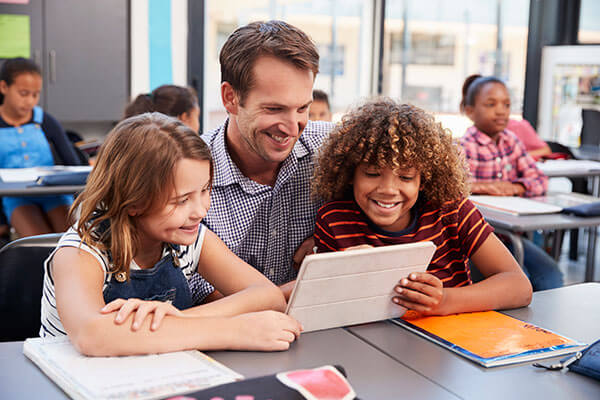Technology has always been at the forefront of human education. From the days of carving figures on rock walls to today, when most students are equipped with several portable technological devices at any given time, technology continues to push educational capabilities to new levels. In looking at where educational methods and tools have come from to where they are going in the future, technology’s importance in the classroom is evident now more than ever.
The Future of Technology in the Classroom
It seems like years since MySpace, first introduced in 2003, Facebook (2004) and Twitter (2007) have changed both the communication and business worlds. Instant connectivity has branched out from merely a tool of personal communication, to a platform for educational instruction and outreach. Social media is now being recognized as an accepted form of instruction in some instances, and groups such as Scholastic Teachers provide excellent support and tips for instructors. Many instructors use social media to communicate directly with their students, or to form forum-style groups for students to communicate with each other, and the method seems to be proving valuable in providing one-on-one attention to student’s questions and concerns.
With the classroom having already evolved into a hotbed of technological advances, what can the future possibly hold that could further educational proficiencies even more?
- Biometrics, a technology that recognizes people based on certain physical or behavioral traits, is on the technological horizon. The science will be used to recognize the physical and emotional disposition of students in the classroom, altering course material to tailor to each individual’s needs based on biometric signals.
- A second up-and-coming technology is Augmented Reality (AR) Glasses, rumored to be on Google’s release list, and this technology could be a whole new world for education. AR Glasses (or even contact lenses) will layer data on top of what we naturally see, to allow for a real-world learning experience. For example, a student wearing AR Glasses could potentially sit at his desk and have a conversation with Thomas Edison about invention. It was Edison, after all, who said that “Books will soon be obsolete in schools. Scholars will soon be instructed through the eye.”
- Multi-touch surfaces are commonly used through equipment such as the iPhone, but the technology could become more relevant to education through entirely multi-touch surfaces, such as desks or workstations. This could allow students to collaborate with other students, even those around the world, and videos and other virtual tools could be streamed directly to the surface.
Analysis:
Integrating technology has always been essential to improving and enhancing human education. I found this article to be helpful in outlining the technological advances of the past as well as ones that might become more prevalent in the future. Without technology, continuing elementary education at the same or nearly the same level during a socially-distanced pandemic would not be possible. Students and teachers are required to adjust to the virtual shift, which means everyone is becoming more tech-savvy. A technological solution to making the online classroom more effective would surely make sense and be easily adaptable to people’s current online school routines. Such solutions that the article suggests include biometrics, Augmented Reality, and multi-touch surfaces used in equipment other than just the iPhone.
Source: https://online.purdue.edu/blog/education/evolution-technology-classroom




